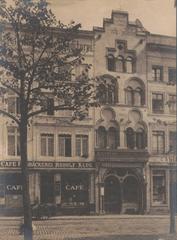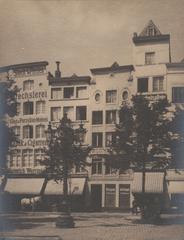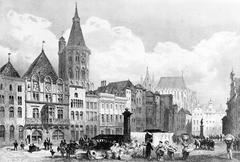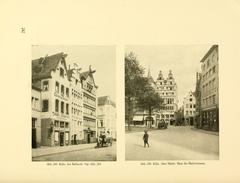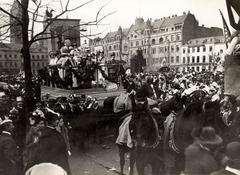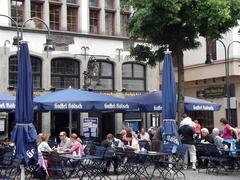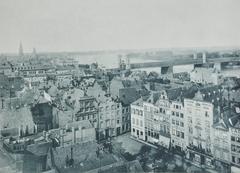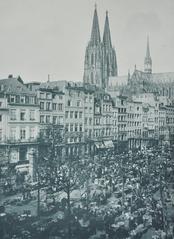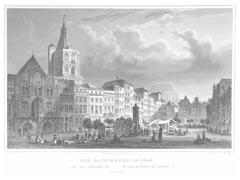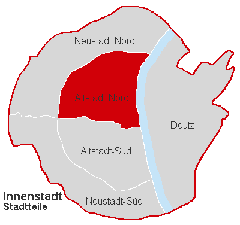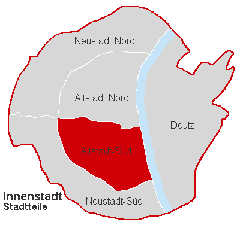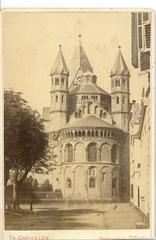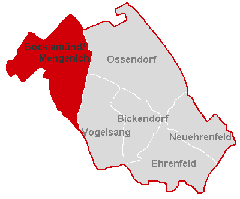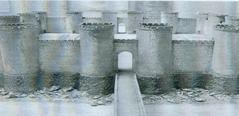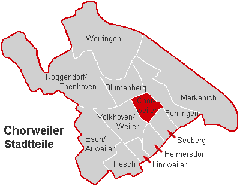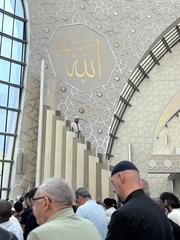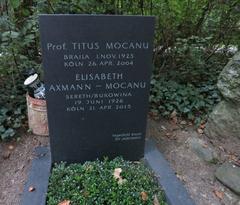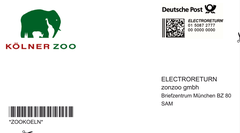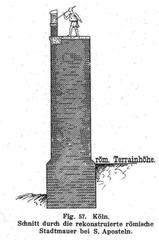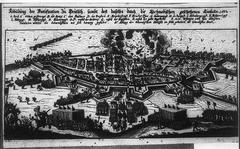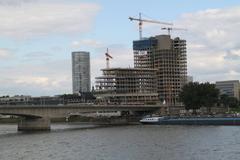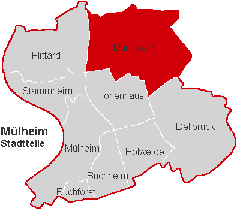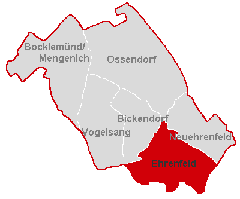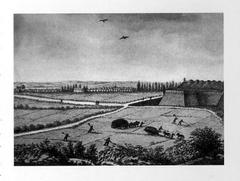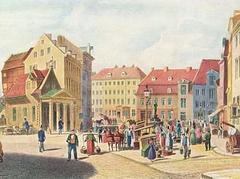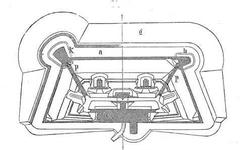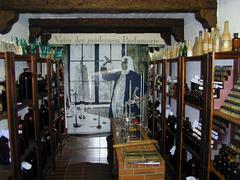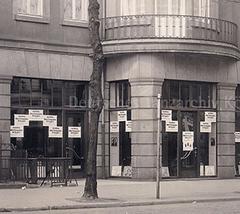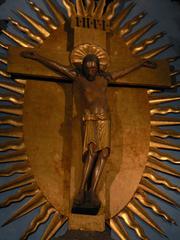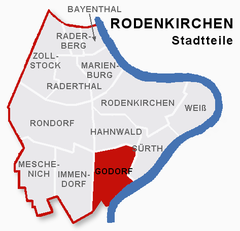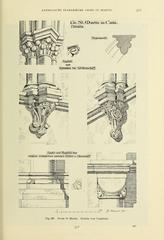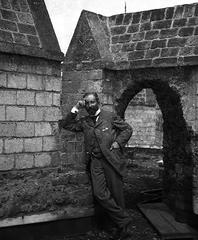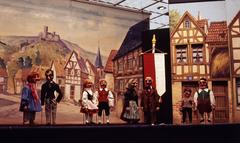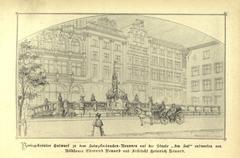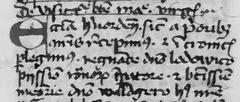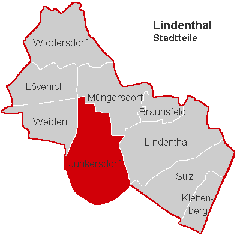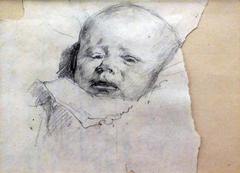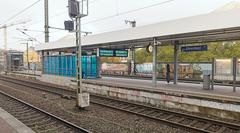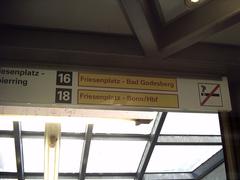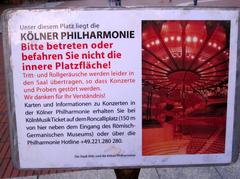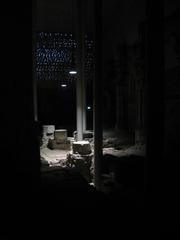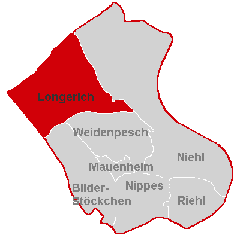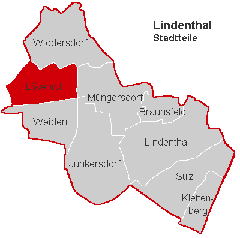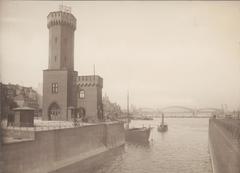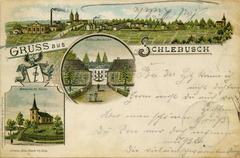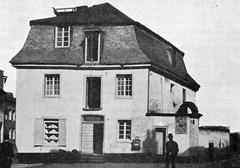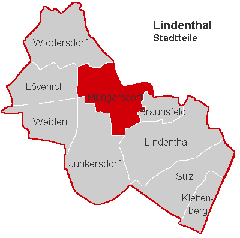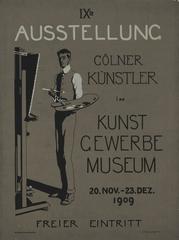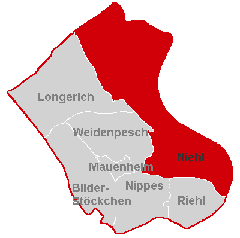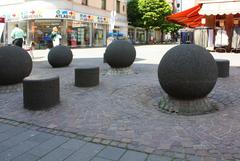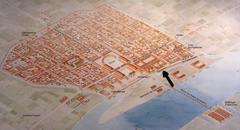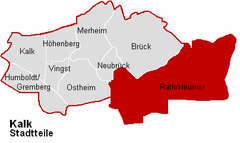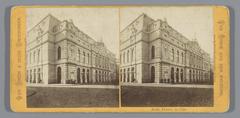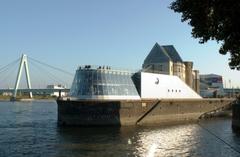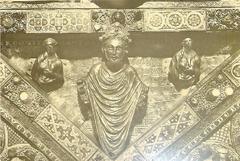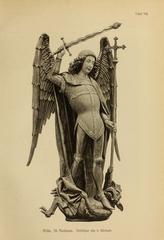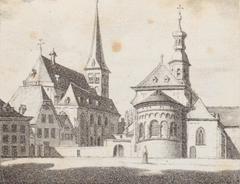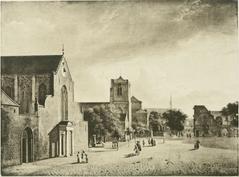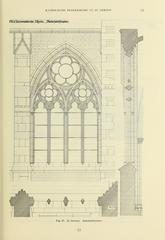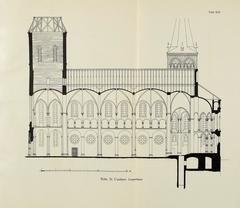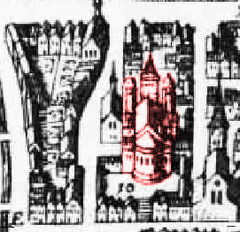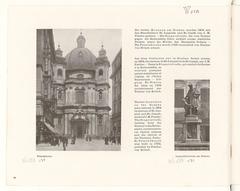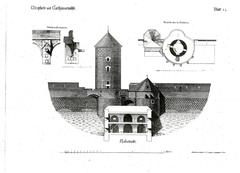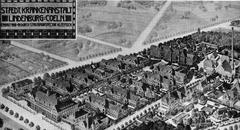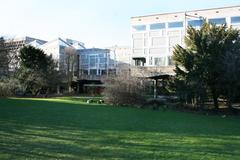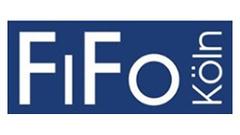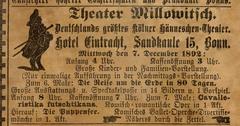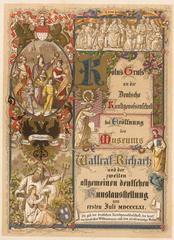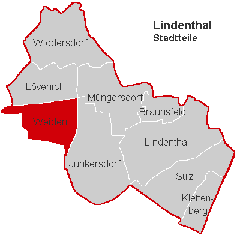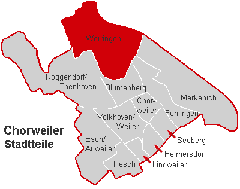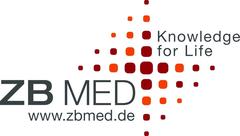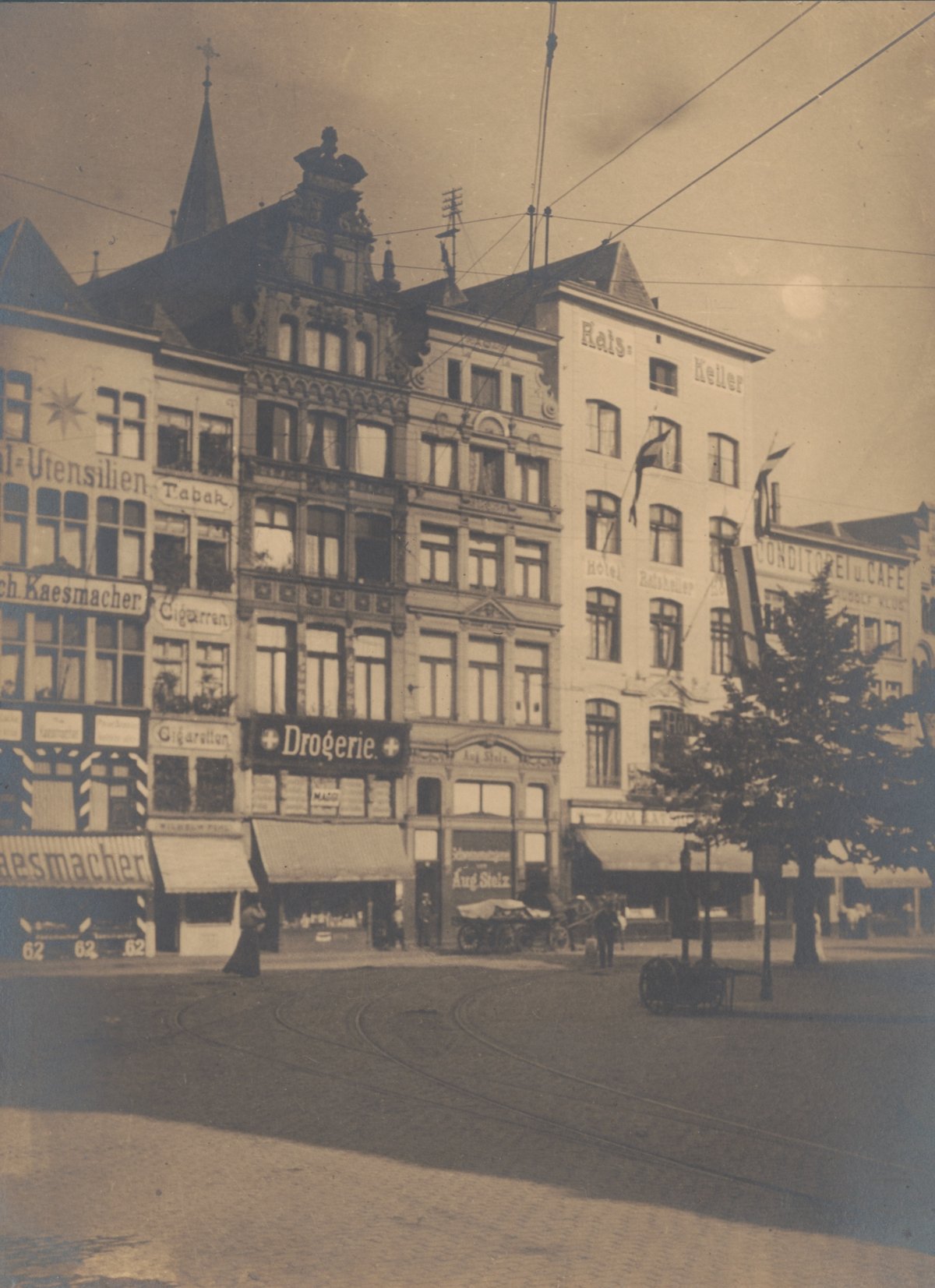
Comprehensive Guide to Visiting Old Market, Cologne, Germany
Publication Date: 17/07/2024
Introduction to Old Market, Cologne
The Old Market (Alter Markt) in Cologne, Germany, stands as a remarkable testament to the city’s rich and multifaceted history. From its inception in the Roman era as part of Colonia Claudia Ara Agrippinensium, established in 50 AD, the Old Market has evolved into a dynamic hub of trade, culture, and social activity (Cologne Tourism). Over the centuries, it has witnessed significant historical milestones, from being a bustling medieval market to a central node in the Hanseatic League’s trade network, and has continued to thrive through the challenges of wars and modernization (Historic Highlights of Germany). Today, the Old Market not only preserves its historical charm but also offers a blend of modern amenities, making it a must-visit destination for those exploring Cologne’s rich cultural tapestry. This guide provides an in-depth exploration of the Old Market’s history, architectural evolution, and practical tips for visitors, ensuring a comprehensive understanding of this iconic site.
Table of Contents
- Introduction
- Origins and Early Development
- Medieval Significance
- Architectural Evolution
- The Hanseatic League
- The Impact of the Thirty Years’ War
- 19th Century Industrialization
- World War II and Reconstruction
- Modern-Day Significance
- Visitor Information
- Nearby Attractions and Travel Tips
- Special Events and Guided Tours
- Preservation and Cultural Heritage
- FAQ
- Conclusion
Exploring the Old Market in Cologne - History, Visitor Tips, and More
Introduction
The Old Market (Alter Markt) in Cologne, Germany, is more than just a historical site; it’s a vibrant testament to the city’s rich and diverse history. From its Roman origins to its modern-day charm, the Old Market has been a central hub for trade, social activities, and cultural events. This article will explore its storied past, provide practical information for visitors, and offer travel tips to enhance your visit.
Origins and Early Development
The Old Market has a rich history dating back to the Roman era. Cologne, originally known as Colonia Claudia Ara Agrippinensium, was founded in 50 AD by the Romans. The Old Market area was a central part of this Roman settlement, serving as a forum where trade and social activities took place. Archaeological findings, including remnants of Roman buildings and artifacts, underscore the market’s ancient origins (Cologne Tourism).
Medieval Significance
During the Middle Ages, the Old Market became the heart of Cologne’s commercial and social life. By the 10th century, Cologne had grown into one of the largest and most important cities in the Holy Roman Empire. The market square was a bustling hub where merchants from across Europe gathered to trade goods such as textiles, spices, and metals. The market’s strategic location along the Rhine River facilitated trade and commerce, contributing to Cologne’s prosperity (Historic Highlights of Germany).
Architectural Evolution
The Old Market’s architecture reflects its historical significance. The square is surrounded by buildings that showcase a blend of Romanesque, Gothic, and Renaissance styles. One notable structure is the ‘Gürzenich,’ a Gothic-style banquet hall built in the mid-15th century. The Gürzenich served as a venue for important events, including imperial banquets and city council meetings. Another significant building is the ‘Rathaus’ or Town Hall, which dates back to the 12th century and features a striking Gothic tower added in the 15th century (Cologne City Hall).
The Hanseatic League
In the 13th and 14th centuries, Cologne became a prominent member of the Hanseatic League, a powerful economic and defensive alliance of merchant guilds and market towns in Northwestern and Central Europe. The Old Market played a crucial role in this period, serving as a central point for the exchange of goods and information among Hanseatic merchants. The market’s importance during this era is evidenced by the construction of warehouses and trading houses around the square (Hanseatic League).
The Impact of the Thirty Years’ War
The Thirty Years’ War (1618-1648) had a profound impact on Cologne and its Old Market. Although Cologne remained relatively unscathed compared to other German cities, the war disrupted trade and led to economic decline. The Old Market, once a thriving center of commerce, experienced a period of stagnation. However, the resilience of the city’s merchants and the strategic importance of the Rhine River helped Cologne recover in the subsequent decades (Thirty Years’ War).
19th Century Industrialization
The 19th century brought significant changes to the Old Market with the advent of industrialization. Cologne’s population grew rapidly, and the city expanded beyond its medieval boundaries. The Old Market area saw the construction of new buildings and infrastructure to accommodate the growing urban population. Despite these changes, the market retained its historical charm and continued to be a focal point for social and commercial activities (Industrialization in Cologne).
World War II and Reconstruction
World War II had a devastating impact on Cologne, with much of the city, including the Old Market, suffering extensive damage from Allied bombings. The market square and its surrounding buildings were heavily damaged, and many historical structures were reduced to rubble. The post-war reconstruction of Cologne was a monumental task, and efforts were made to restore the Old Market to its former glory. The reconstruction process involved meticulous restoration of historical buildings and the preservation of the market’s historical layout (WWII Impact on Cologne).
Modern-Day Significance
Today, the Old Market is a vibrant and bustling area that attracts both locals and tourists. It hosts various events throughout the year, including the famous Cologne Carnival, Christmas markets, and cultural festivals. The market square is lined with cafes, restaurants, and shops, offering a blend of historical charm and modern amenities. The Old Market remains a testament to Cologne’s rich history and its ability to adapt and thrive through the centuries (Cologne Carnival).
Visitor Information
For those planning to visit, the Old Market is accessible year-round, with no specific visiting hours as it is an open public space. However, individual establishments such as cafes, shops, and museums around the square will have their own operating hours. There is no entry fee to visit the market itself, but some attractions may charge admission (Cologne Historical Sites).
Best Time to Visit
The market is a year-round destination, with each season offering a unique experience. Summer (June to August) is ideal for enjoying outdoor cafes and street performances. For a more relaxed visit, consider coming in spring (April to May) or autumn (September to October). Winter (December to February) offers the charm of the Cologne Christmas Market, where the area transforms into a festive wonderland.
Getting There
The Old Market is centrally located and easily accessible by various modes of transportation. The nearest tram stop is Heumarkt, served by lines 1, 7, and 9. From there, it’s a short walk to the market square. If you’re coming by train, the Cologne Central Station (Köln Hauptbahnhof) is about a 10-minute walk away. For those driving, nearby parking garages like Parkhaus Heumarkt are recommended due to limited street parking.
Navigating the Market
The Old Market is pedestrian-friendly, making it easy to explore on foot. The square is surrounded by historical buildings, cafes, and shops, with plenty of benches and open spaces to rest. A map can be handy, especially if you plan to visit specific landmarks like the Cologne City Hall (Rathaus) or the Jan von Werth Fountain.
Local Cuisine and Dining
The Old Market is a culinary hotspot, offering a variety of dining options. Traditional German cuisine is a must-try, with many restaurants serving dishes like Sauerbraten and Himmel un Ääd. For a quick bite, try a Bratwurst from one of the street vendors. Highly recommended restaurants include Brauhaus Sion and Gilden im Zims.
Shopping
The market is also great for shopping, featuring a mix of souvenir shops, boutiques, and local artisan stores. For unique gifts, visit Heimat. If you’re interested in antiques, Antiquitäten am Alter Markt offers a fascinating collection of vintage items.
Cultural Etiquette
Understanding local customs can enhance your visit. Germans value punctuality, so arrive on time for reservations or appointments. Tipping is customary in restaurants, with 5-10% being the norm. When greeting locals, a firm handshake is standard, and it’s polite to say “Guten Tag” or “Hallo”.
Safety Tips
The Old Market is generally safe, but it’s wise to stay vigilant. Keep an eye on your belongings, especially in crowded areas. Use a money belt or a secure bag to avoid pickpocketing. If you’re out late, stick to well-lit areas and avoid walking alone.
Events and Festivals
The market hosts several events throughout the year, including the famous Cologne Carnival in February and the Christmas Market in December. For a detailed schedule, check the Cologne Tourism website.
Accessibility
The Old Market is accessible to visitors with mobility issues. The square is flat and paved, making it easy to navigate with wheelchairs or strollers. Many restaurants and shops have ramps or are at street level. Public restrooms with disabled access are available nearby, such as those at the Heumarkt tram stop.
Photography Tips
The Old Market is a photographer’s dream, with its historical architecture and vibrant street life. Visit early in the morning or late in the afternoon for the best light. The Jan von Werth Fountain and the facades of the surrounding buildings make excellent subjects.
Nearby Attractions and Travel Tips
The Old Market is close to several other attractions worth visiting, such as the Cologne Cathedral (Kölner Dom), a UNESCO World Heritage site, and the Museum Ludwig. For a relaxing break, head to the Rheinpark.
Special Events and Guided Tours
The Old Market hosts several special events throughout the year. The Cologne Carnival, one of the largest street festivals in Europe, brings the market to life with parades, music, and dancing. During the holiday season, the Christmas markets offer a magical experience with festive decorations, food stalls, and unique gifts. Guided tours are available for those interested in a more in-depth exploration of the market’s history and architecture (Cologne Guided Tours).
Preservation and Cultural Heritage
Efforts to preserve the Old Market’s historical and cultural heritage continue to this day. The market square and its surrounding buildings are protected as part of Cologne’s cultural heritage. Various initiatives, including guided tours and educational programs, aim to raise awareness about the market’s historical significance and ensure its preservation for future generations (Cologne Cultural Heritage).
FAQ
Q: What are the visiting hours for the Old Market in Cologne?
A: The Old Market is an open public space, accessible year-round with no specific visiting hours.
Q: Are there any entry fees for visiting the Old Market?
A: There is no entry fee to visit the market itself, but some attractions around the square may charge admission.
Q: What are some nearby attractions to the Old Market?
A: Nearby attractions include the Cologne Cathedral, the Roman-Germanic Museum, and the Hohenzollern Bridge.
Q: Are guided tours available at the Old Market?
A: Yes, guided tours are available and offer detailed insights into the market’s history and architecture.
Call to Action
Discover the rich history and vibrant culture of the Old Market in Cologne. Download the Audiala mobile app for an interactive guide to Cologne’s historical sites, and follow us on social media for more travel tips and updates.
Conclusion
The Old Market in Cologne is not just a historical site but a living testament to the city’s rich and diverse history. From its Roman origins to its role in the Hanseatic League, through the trials of war and the challenges of modernization, the Old Market has remained a central and enduring part of Cologne’s identity. Its preservation and continued vibrancy are a tribute to the city’s resilience and cultural heritage.
Sources and Further Reading
- Cologne Tourism, 2024, Exploring the Old Market in Cologne - History, Visiting Hours, and Travel Tips
- Historic Highlights of Germany, 2024, Exploring the Old Market in Cologne - History, Visiting Hours, and Travel Tips
- Cologne City Hall, 2024, Exploring the Old Market in Cologne - History, Visiting Hours, and Travel Tips
- Cologne Carnival, 2024, Exploring the Old Market in Cologne - History, Visiting Hours, and Travel Tips
- Cologne Cultural Heritage, 2024, Exploring the Old Market in Cologne - History, Visiting Hours, and Travel Tips

